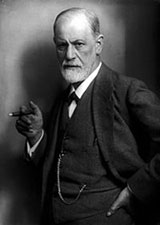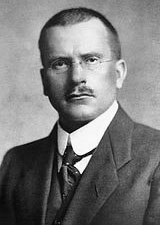
Consider dreaming that you are tumbling down some snow-filled mountain. This and similar other dreams always tend to cause fear and apprehension once an individual wakes up. This is because such dreams give some indication, however subtle, that something could terribly go wrong. The first premonition will be to try and do something about the dream. Unfortunately, that can only be possible if the meaning of the dream can me made known. This is what essentially constitutes dream analysis. This article examines dream analysis using two known approaches: Freudian and Jungian.
There is scanty literature on the exact origins of dream analysis. However, the first recorded examples of dream analysis can be traced to the Egyptian antiquity. Ostensibly, there existed professional dream interpreters who, back in the day, were believed to be the messengers of the gods. The current version of dream analysis and or interpretation, however, did not bud until the 20th century. This was after the ground breaking works of two psychoanalysts: Sigmund Freud and Carl Jung.
Freudian Dream Analysis
 Sigmund Freud postulated that an individual’s unconscious is a store of diverse kinds of desires and wishes. The purpose of this is to shield this desires and wishes from possible willful manipulation by the conscious. As a result, the only way that these desires and wishes can become manifested is through dreams as though they are being replayed. He further augmented his argument with the idea that the experiences of an individual further trigger the occurrences of dreams. Freud published this theory in his publication, The Interpretation of Dreams in 1900.
Sigmund Freud postulated that an individual’s unconscious is a store of diverse kinds of desires and wishes. The purpose of this is to shield this desires and wishes from possible willful manipulation by the conscious. As a result, the only way that these desires and wishes can become manifested is through dreams as though they are being replayed. He further augmented his argument with the idea that the experiences of an individual further trigger the occurrences of dreams. Freud published this theory in his publication, The Interpretation of Dreams in 1900.
According, Freud’s theory is heavily pegged on symbolism as an essential key to deciphering a dream. Notably, it is worth mentioning that Freud’s theory posited that the content of a dream would not have expressly been same as the issue that was supposedly conveyed. He asserted that besides the contents of a dream, the underlying cause of a dream must be dug out as a pointer to a better understanding of a dream.
Interestingly, Freud’s interpretation appeared overly skewed to depict the latent content of most dreams as being predominantly sexual in nature. As a result, Freud used a number of symbols to interpret dreams. These are:
- Phallic symbols (Which included the presence of symbols like guns, snakes, neckties. These symbols’ key identifying feature is their length being more than their width).
- Vaginal symbols on the other hand included any symbols that suggested openings such as entries, doors, exits, tunnels, windows, etc.
- On the other hand, sexual symbols constituted all such acts as depicted sexual activity. For example, when one was seen climbing or going down stairs, it was interpreted to refer to sex.
Jungian Dream Analysis
 Jung’s theory of dream analysis, on the other hand, significantly differs from that of Freud. According to Jung, dreams are a way of communication where the repressed desires and wishes of the unconscious are revealed to the conscious. This is in stark contrast to Freud’s proposition to the effect that the unconscious hides the repressed desires and wishes from the conscious.
Jung’s theory of dream analysis, on the other hand, significantly differs from that of Freud. According to Jung, dreams are a way of communication where the repressed desires and wishes of the unconscious are revealed to the conscious. This is in stark contrast to Freud’s proposition to the effect that the unconscious hides the repressed desires and wishes from the conscious.
In Jung’s view, the unconscious has two distinct parts. The first part belonged to the individual while the second was collective in nature. Whilst the former related to the experiences and associated symbols touching on the person, the latter is a collection of universal symbols that touch on just about everybody. In this sense, any given dream would employ the use of symbols from the personal as well as the collective parts of the unconscious.
Typically, Jung’s approach of dream analysis does not rely on symbols and their interpretation. Rather, the approach is hinged on the archetypes of dreams. In this regard, he identified the following archetypes:
- Shadows: A shadow, according to Jung, was basically perceived to be informative of what would be the meaning of the dream, notwithstanding its evil nature. A shadow would often be manifested as being the same sex as the person dreaming.
- Anima (Feminine) or Animus (Masculine): This, when evident in a dream, was indicative of one’s ideal partner/ mate. This would often appear as a person of the opposite sex.
- Self: This was said to represent you, even though it would appear older at times.
Inasmuch as your efforts to correctly interpret your dream may have not borne likeable results, do not be dismayed. Tarot Prophet, Sophia Loren, will offer you invaluable insights into your dreamland and take a walk with you in analyzing every little bit of your dream.

